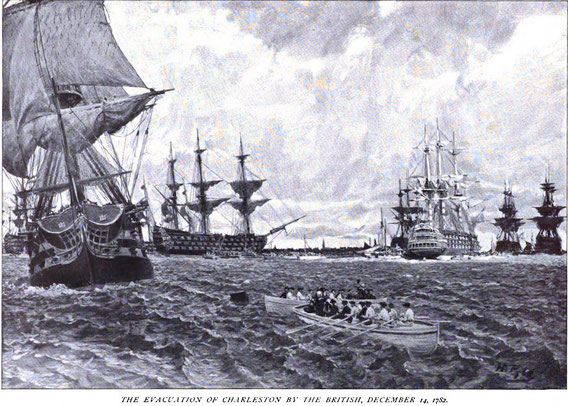About the graphics
Book font

After Yorktown uses three variations of Caslon, a commonly used 18th century English and colonial font. The metal Caslon type pieces used to set documents such as the Declaration of
Independence have a weathered look to them, because, according to one theory, they were, supposedly, weathered and rusted by exposure to salt air on their voyage to America.
(Dunlap copy of Declaration, Library of Congress)
Favicon

The favicon—the little icon next to the website's url—is a detail from a painting by John Trumbull of his Continental Army colleague, Nathanael Greene, one of the rebels' top generals, and one of my personal heroes. A larger version is in Portraits.
Dust-jacket art
The dust-jacket art is a detail from a painting by Howard Pyle, The Evacuation of Charleston by the British, December 14, 1782. The illustration first appeared in Scribner's Magazine in 1898 in a chapter of a serialized book written by historian and U.S. Senator Henry Cabot Lodge, R–Mass., The Story of the Revolution, "Greene's Campaign in the South."
Howard Pyle (1853–1911) was a Delaware-born, prominent illustrator, part of the Brandywine School that includes N.C. Wyeth. His works are in the collections of the Met, National Gallery, and the Smithsonian, among others. The Evacuation of Charleston is owned by the Delaware Art Museum.



